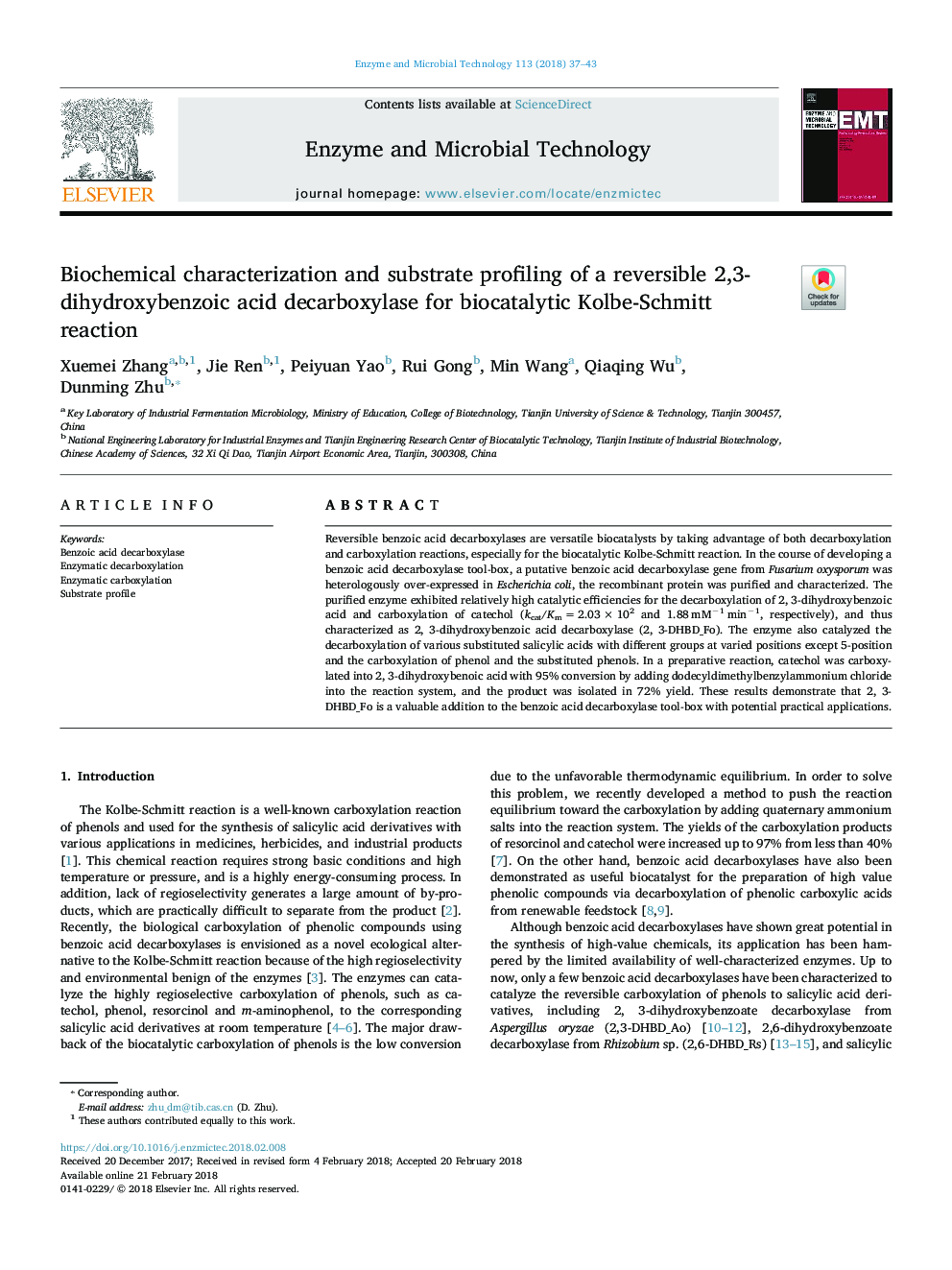| Article ID | Journal | Published Year | Pages | File Type |
|---|---|---|---|---|
| 6488127 | Enzyme and Microbial Technology | 2018 | 7 Pages |
Abstract
Reversible benzoic acid decarboxylases are versatile biocatalysts by taking advantage of both decarboxylation and carboxylation reactions, especially for the biocatalytic Kolbe-Schmitt reaction. In the course of developing a benzoic acid decarboxylase tool-box, a putative benzoic acid decarboxylase gene from Fusarium oxysporum was heterologously over-expressed in Escherichia coli, the recombinant protein was purified and characterized. The purified enzyme exhibited relatively high catalytic efficiencies for the decarboxylation of 2, 3-dihydroxybenzoic acid and carboxylation of catechol (kcat/Kmâ¯=â¯2.03â¯Ãâ¯102 and 1.88â¯mMâ1â¯minâ1, respectively), and thus characterized as 2, 3-dihydroxybenzoic acid decarboxylase (2, 3-DHBD_Fo). The enzyme also catalyzed the decarboxylation of various substituted salicylic acids with different groups at varied positions except 5-position and the carboxylation of phenol and the substituted phenols. In a preparative reaction, catechol was carboxylated into 2, 3-dihydroxybenoic acid with 95% conversion by adding dodecyldimethylbenzylammonium chloride into the reaction system, and the product was isolated in 72% yield. These results demonstrate that 2, 3-DHBD_Fo is a valuable addition to the benzoic acid decarboxylase tool-box with potential practical applications.
Related Topics
Physical Sciences and Engineering
Chemical Engineering
Bioengineering
Authors
Xuemei Zhang, Jie Ren, Peiyuan Yao, Rui Gong, Min Wang, Qiaqing Wu, Dunming Zhu,
